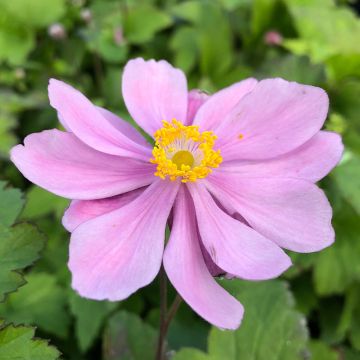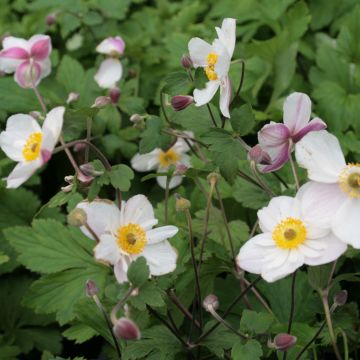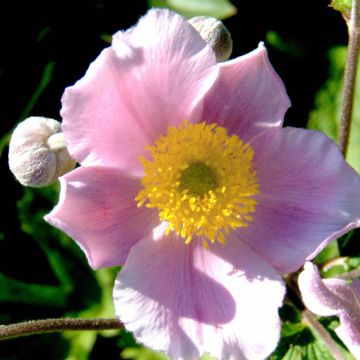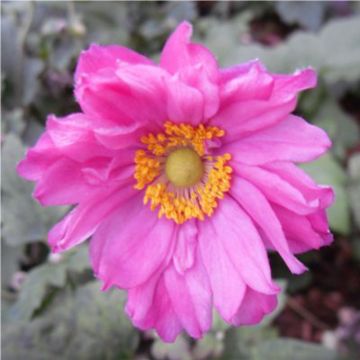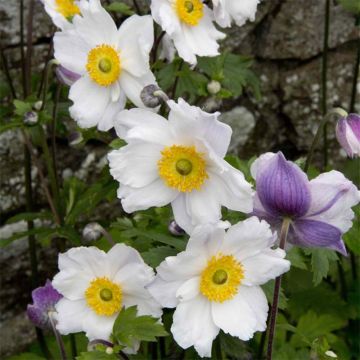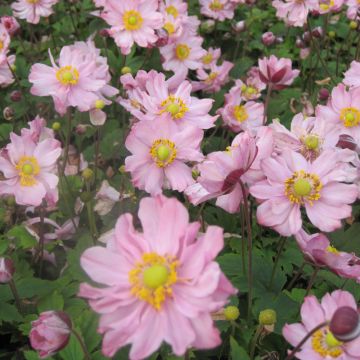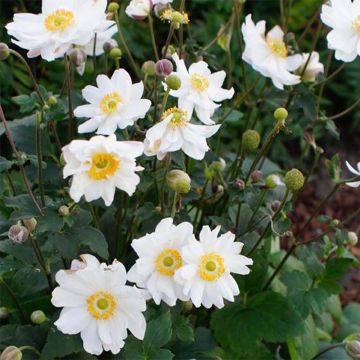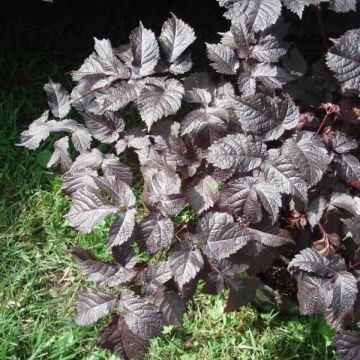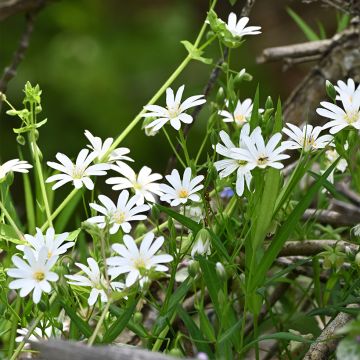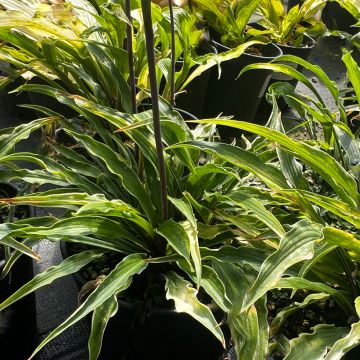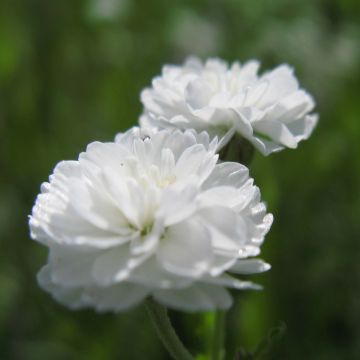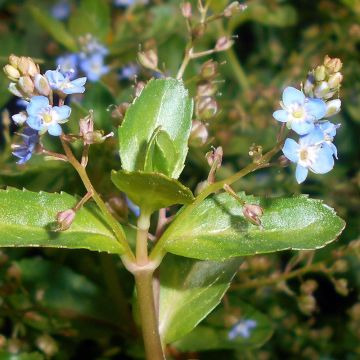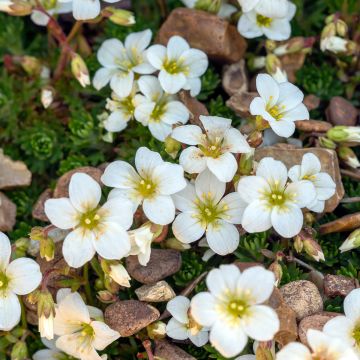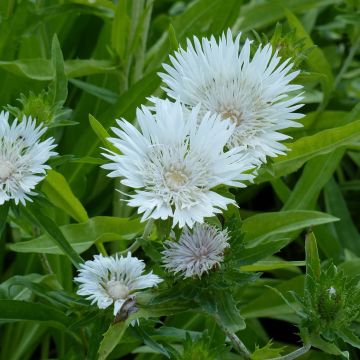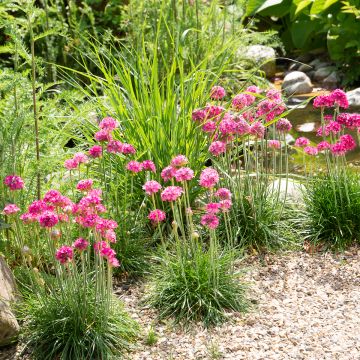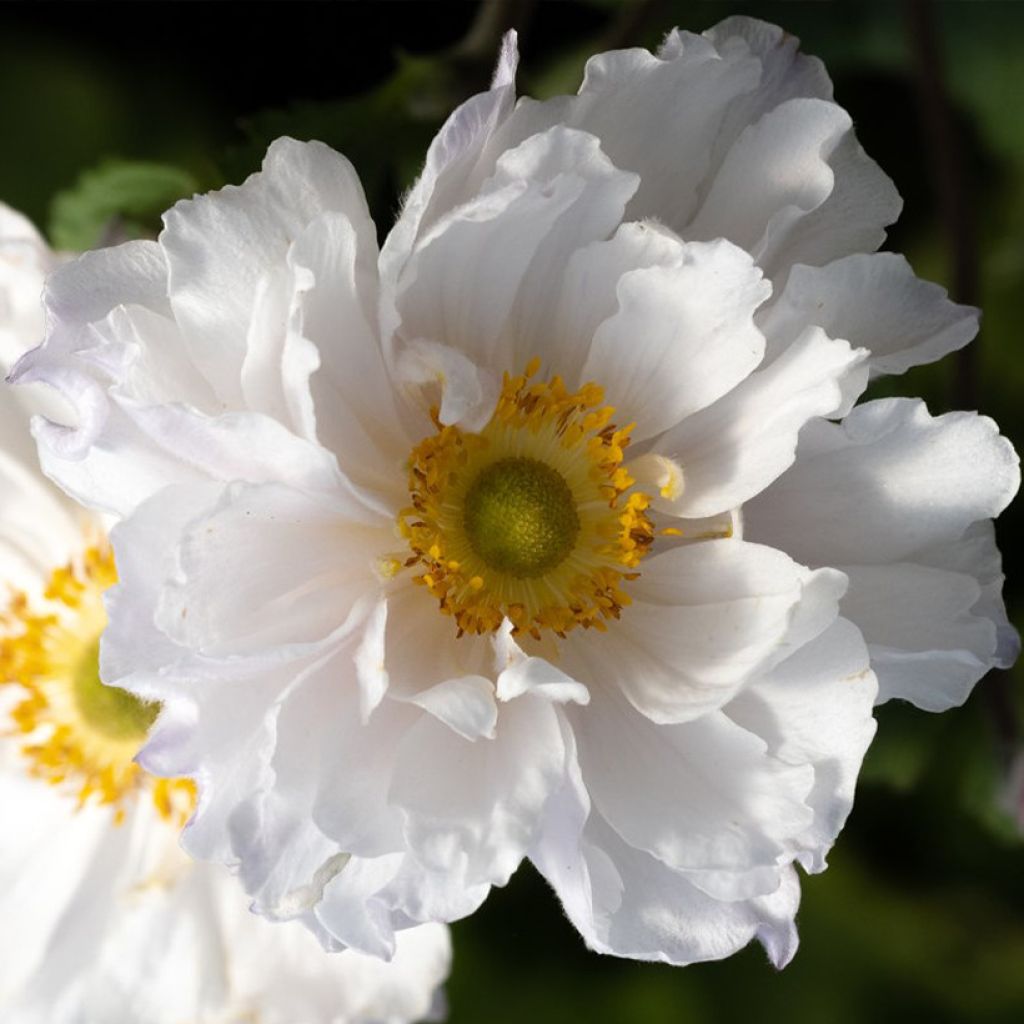

Anémone du Japon hybride Frilly Knickers
Anemone hybrida Frilly Knickers
Anemone x hybrida Frilly Knickers
Japanese Anemone, Windflower, Woolly anemone
This item cannot be shipped to the selected country
Delivery charge from €5.90
More information
Schedule delivery date,
and select date in basket
This plant carries a 12 months recovery warranty
More information
We guarantee the quality of our plants for a full growing cycle, and will replace at our expense any plant that fails to recover under normal climatic and planting conditions.
From €5.90 for pickup delivery and €6.90 for home delivery
Express home delivery from €8.90.
Does this plant fit my garden?
Set up your Plantfit profile →
Description
The hybrid Anemone Frilly Knickers is a medium-sized, floriferous and robust variety with very pretty semi-double flowers that are slightly ruffled. Full of charm, its delicate flowers, tousled, pure white, are infused with a soft lilac. The reverse of the petals is tinged with dark violet. It blooms from July to September, producing beautiful violet buds and numerous flowers, on medium green foliage. A simple beauty that complements other summer and autumn blooms. This perennial thrives in partial shade or possibly in the sun, in moist and rich soil.
The Frilly Knickers Anemone belongs to the Ranunculaceae family. This hybrid, obtained in 2020 by Hardy's, was immediately recognized for its robustness and beauty. Like other hybrids obtained from Japanese anemones, it is a perennial plant with fibrous 'tubers' that form large, vigorous, and rounded clumps. The foliage is deciduous to semi-evergreen in winter depending on the climate. Its leaves are deeply divided, strongly veined on the underside, and hairy. In this variety, the foliage is medium green, and the plant reaches 60 cm (24in) in height when in bloom, with a width of about 45 cm. The abundant flowers appear from early July to September, or even October, and the plants keep flowering as long as the soil does not dry out too much. The flowers are carried by sturdy, well-branched stems. They first appear as delightful oval and fluffy buds, violet in colour, then open up into semi-double cups, with a crumpled appearance, in this harmony of white, mauve, and deep violet. The golden yellow centre is densely filled with stamens. Anemones can live for years in the same spot, as long as the soil is rich.
The Frilly Knickers anemone brings flower beds alive from summer to autumn, in the company, for example, of the Fuchsia magellanica var molinae, the Rabdosia longituba, or asters such as Aster ageratoides 'Stardust', Aster sedifolium, or the Aster novae-angliae and their numerous varieties. It can also be paired with fine-leaved grasses for a contrasting effect, for example, with Carex morowii 'Ice Dance'. It proves to be excellent as a cut flower for your beautiful autumn bouquets.
Report an error about the product description
Anemone hybrida Frilly Knickers in pictures
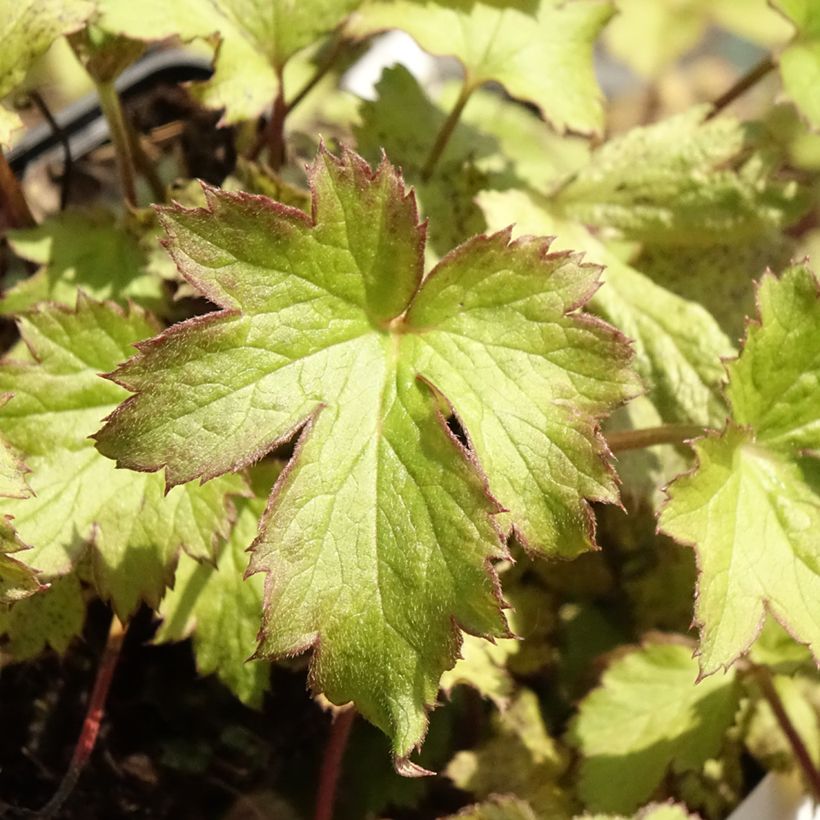

Flowering
Foliage
Plant habit
Botanical data
Anemone
x hybrida
Frilly Knickers
Ranunculaceae
Japanese Anemone, Windflower, Woolly anemone
Cultivar or hybrid
Other Japanese Anemones
Planting and care
The Japanese anemone Frilly Knickers grows in partial shade, in a moist, humus-rich, loose soil, without too much limestone. Plant it in a sheltered spot, away from strong winds, in spring or autumn, spacing them 30 cm (12in) apart, in a moist to wet, but well-drained soil. Once the young plants are established, they should not be disturbed. The flowering becomes more and more abundant as the years go by. In late autumn, cut the flower stalks to the ground. Every 2 or 3 years, add well-decomposed compost to their base to enrich the soil, as they are quite hungry.
Planting period
Intended location
Care
-
, onOrder confirmed
Reply from on Promesse de fleurs
Summer flowering perennials
Haven't found what you were looking for?
Hardiness is the lowest winter temperature a plant can endure without suffering serious damage or even dying. However, hardiness is affected by location (a sheltered area, such as a patio), protection (winter cover) and soil type (hardiness is improved by well-drained soil).

Photo Sharing Terms & Conditions
In order to encourage gardeners to interact and share their experiences, Promesse de fleurs offers various media enabling content to be uploaded onto its Site - in particular via the ‘Photo sharing’ module.
The User agrees to refrain from:
- Posting any content that is illegal, prejudicial, insulting, racist, inciteful to hatred, revisionist, contrary to public decency, that infringes on privacy or on the privacy rights of third parties, in particular the publicity rights of persons and goods, intellectual property rights, or the right to privacy.
- Submitting content on behalf of a third party;
- Impersonate the identity of a third party and/or publish any personal information about a third party;
In general, the User undertakes to refrain from any unethical behaviour.
All Content (in particular text, comments, files, images, photos, videos, creative works, etc.), which may be subject to property or intellectual property rights, image or other private rights, shall remain the property of the User, subject to the limited rights granted by the terms of the licence granted by Promesse de fleurs as stated below. Users are at liberty to publish or not to publish such Content on the Site, notably via the ‘Photo Sharing’ facility, and accept that this Content shall be made public and freely accessible, notably on the Internet.
Users further acknowledge, undertake to have ,and guarantee that they hold all necessary rights and permissions to publish such material on the Site, in particular with regard to the legislation in force pertaining to any privacy, property, intellectual property, image, or contractual rights, or rights of any other nature. By publishing such Content on the Site, Users acknowledge accepting full liability as publishers of the Content within the meaning of the law, and grant Promesse de fleurs, free of charge, an inclusive, worldwide licence for the said Content for the entire duration of its publication, including all reproduction, representation, up/downloading, displaying, performing, transmission, and storage rights.
Users also grant permission for their name to be linked to the Content and accept that this link may not always be made available.
By engaging in posting material, Users consent to their Content becoming automatically accessible on the Internet, in particular on other sites and/or blogs and/or web pages of the Promesse de fleurs site, including in particular social pages and the Promesse de fleurs catalogue.
Users may secure the removal of entrusted content free of charge by issuing a simple request via our contact form.
The flowering period indicated on our website applies to countries and regions located in USDA zone 8 (France, the United Kingdom, Ireland, the Netherlands, etc.)
It will vary according to where you live:
- In zones 9 to 10 (Italy, Spain, Greece, etc.), flowering will occur about 2 to 4 weeks earlier.
- In zones 6 to 7 (Germany, Poland, Slovenia, and lower mountainous regions), flowering will be delayed by 2 to 3 weeks.
- In zone 5 (Central Europe, Scandinavia), blooming will be delayed by 3 to 5 weeks.
In temperate climates, pruning of spring-flowering shrubs (forsythia, spireas, etc.) should be done just after flowering.
Pruning of summer-flowering shrubs (Indian Lilac, Perovskia, etc.) can be done in winter or spring.
In cold regions as well as with frost-sensitive plants, avoid pruning too early when severe frosts may still occur.
The planting period indicated on our website applies to countries and regions located in USDA zone 8 (France, United Kingdom, Ireland, Netherlands).
It will vary according to where you live:
- In Mediterranean zones (Marseille, Madrid, Milan, etc.), autumn and winter are the best planting periods.
- In continental zones (Strasbourg, Munich, Vienna, etc.), delay planting by 2 to 3 weeks in spring and bring it forward by 2 to 4 weeks in autumn.
- In mountainous regions (the Alps, Pyrenees, Carpathians, etc.), it is best to plant in late spring (May-June) or late summer (August-September).
The harvesting period indicated on our website applies to countries and regions in USDA zone 8 (France, England, Ireland, the Netherlands).
In colder areas (Scandinavia, Poland, Austria...) fruit and vegetable harvests are likely to be delayed by 3-4 weeks.
In warmer areas (Italy, Spain, Greece, etc.), harvesting will probably take place earlier, depending on weather conditions.
The sowing periods indicated on our website apply to countries and regions within USDA Zone 8 (France, UK, Ireland, Netherlands).
In colder areas (Scandinavia, Poland, Austria...), delay any outdoor sowing by 3-4 weeks, or sow under glass.
In warmer climes (Italy, Spain, Greece, etc.), bring outdoor sowing forward by a few weeks.


































